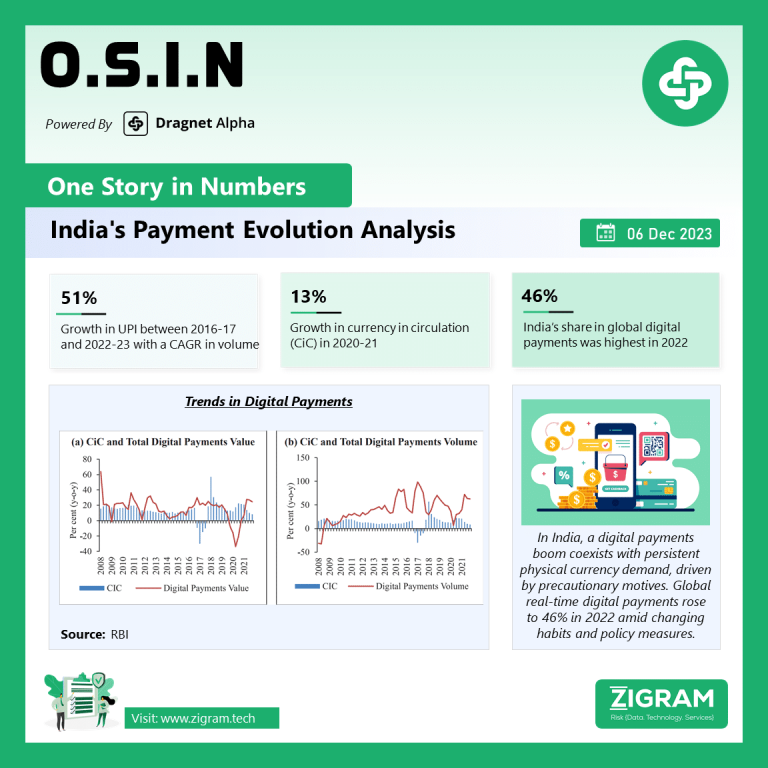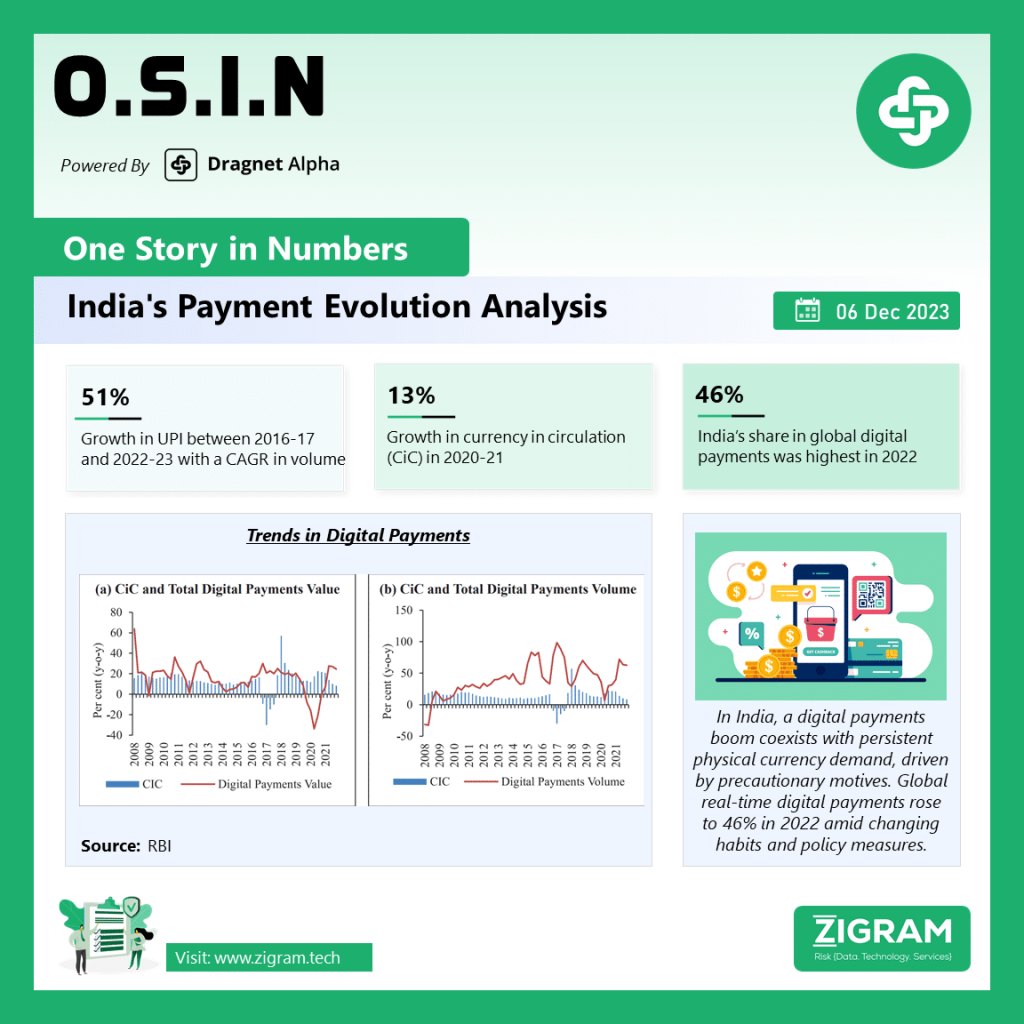Published Date:
In India, the coexistence of a thriving digital payments ecosystem and persistent demand for physical currency, exacerbated by the pandemic, poses a paradox. A detailed analysis by the RBI reveals that the sustained growth in currency demand is primarily driven by precautionary and store-of-value motives, while cash as a payment medium steadily declines. This signifies a growing substitution of cash by digital payments for transactions. Although income remains a key factor in currency demand, the rapid rise of digital payments, inversely correlated with cash, could potentially temper the positive income effect.
The Indian currency in circulation (CiC) has experienced significant changes in recent years, with peaks and troughs reflecting key episodes in Indian history. From 1969 to 1980, the CIC increased from 8.4% to 14% due to policy measures like the nationalization of banks and expansion of bank branches. The next phase, from 1986 to 1995, saw inflationary pressures and structural reforms, leading to high inflation and nominal GDP growth. However, the focus shifted to price stability and monetary contraction from 1996 to 2001. The economic revival from 2001-2009 saw another spurt in CIC. The Payment and Settlement Systems (PSS) Act in 2008 led to a nearly halving of CIC trend growth from 16.9% to 9.5% in 2015-16. Other government initiatives, such as the Jan Dhan-Aadhaar-Mobile (JAM) trinity and Digital India scheme, further accelerated the shift towards digital means. The next peak in 2020 was 15.3% lower than the pre-PSS Act peak in 2008. The next upsurge in CIC from 2016 to 2021 could have been a result of the remonetisation of the economy and COVID-induced uncertainties. Post-2021, the long-term growth momentum in CIC has shown signs of tapering, with both peaks and troughs gradually decreasing over time.
India’s share in global real-time digital payments increased by 6 percentage points to reach 46% in 2022, driven by policy measures and changing payment habits. The pandemic reduced human contact, leading to contactless, safe, and convenient payment modes. Digital payments grew by 64% and 23% in volume and value terms in 2021-22 and 58% and 19% in 2022-23. The underlying payment infrastructure expanded, leading to an increased number of point of sale terminals and quick response codes. The pandemic-induced digital adoption continues to rise, with the substitution of CiC with digital payments underway.
India is among countries experiencing a growth in digital payments alongside currency, with most countries experiencing simultaneous increases in digital and card payments since 2007. This trend is known as the “paradox of banknotes,” with the persistent desire to use cash often linked to precautionary motives rather than transactional needs. Sweden, the hub of digital payments, is the only country showing a secular decline in digital payments as they become almost ubiquitous.
- #DigitalPaymentsIndia
- #CurrencyDemand
- #CashVsDigital
- #FinancialTrends
- #PaymentEvolution
- #EconomicParadox
- #CICAnalysis
- #DigitalTransformation
- #GlobalPayments
- #FinancialTech
- #Covid19Impact
- #CashlessEconomy

